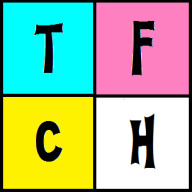Initiative in The Four Color Hack
Action in The Four Color Hack doesn’t happen in rounds. Oh, no. It happens in Panels. Each Panel is a word picture that describes what happens right before the consequences of a hero’s decisions. What follows is an excerpt from the rough-draft rules about initiative in The Four Color Hack.

Whose Panel Is It?
When it’s necessary to determine what order heroes, villains, and whomever else act in, determine initiative using a normal deck of 54 playing cards (that’s 13 cards per suit plus two jokers). At the start of a scene, deal one card to each player. Deal one card for each villain or mob, plus a number of additional cards equal to half the heroes in the scene (drop fractions). Order of actions is determined by cards. Ace is the highest, two is the lowest. Ties are broken by suit, which are in descending order hearts, diamonds, clubs, and spades.
What If I Want a Different Order?
If you want your hero to go earlier or later then what your card indicates, you might be able to convince another Writer or the Editor to trade cards with you. If not, resign yourself to the card you received and make the most your hero’s action when its your Panel.
Why More Cards for the Editor?
The Editors is responsible for more of the story than any individual Writer. For example, each Writer has to make decisions about one hero, but the Editor has to make decisions about the villains, mobs, important supporting characters, and often the effects of Elements (described below under The Splash Page). Each important non-hero character or mob in a scene gets a card just as if that character or mob were played by a Writer. The additional cards represent the narrative advantage of the villain or crisis.
Check out the fight depicted at this link. The villain, front and center, throws down with two heavy hitters while four other heroes fight lesser villains or mobs in the background. If this were happening during game play, each hero would get a card. Each villain and mob would get a card. Those cards represent the specific actions of the heroes, villains, and mobs, played out in the order determined by the cards’ values. The Editor gets three other cards since there are six heroes in the scene. He uses these extra cards for additonal actions from the villains or mobs, or for introducing complications related to Elements.
About Those Jokers
If a joker is dealt to any player other than the Editor, return it to the deck and give that player a replacement card. Only the Editor gets to use jokers, and he can assign a joker to any villain, mob, et cetera, active in the current scene. What’s more, the joker is a wild card, meaning the Editor can interrupt the sequence of Panels any time he wants the character with the joker to act. The joker represents some unexpected development, sudden revelation, or other event detrimental to the heroes. Worst of all, no hero earns a Bonus Hero Die for the Editorial Control.

Leave a Reply